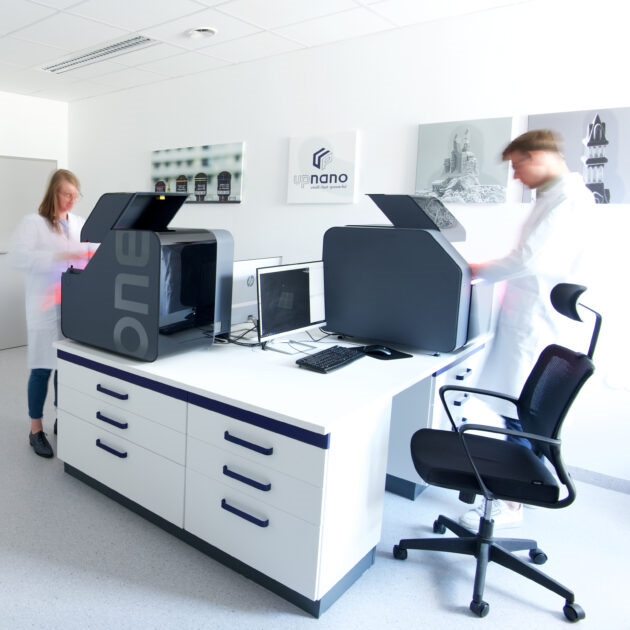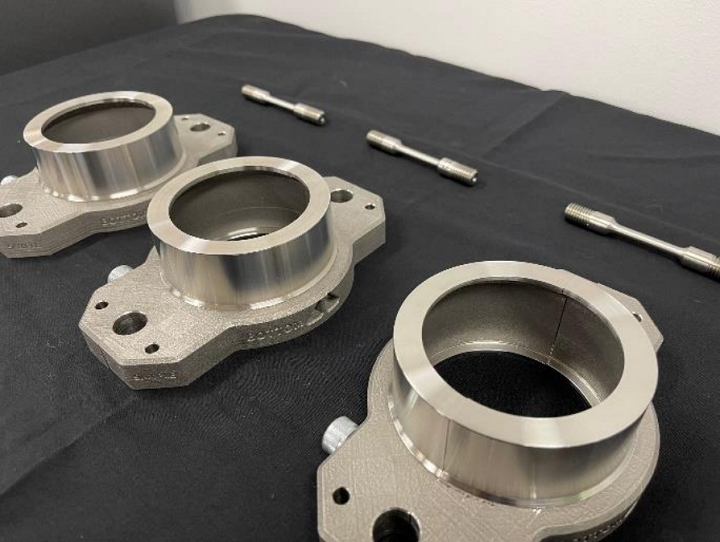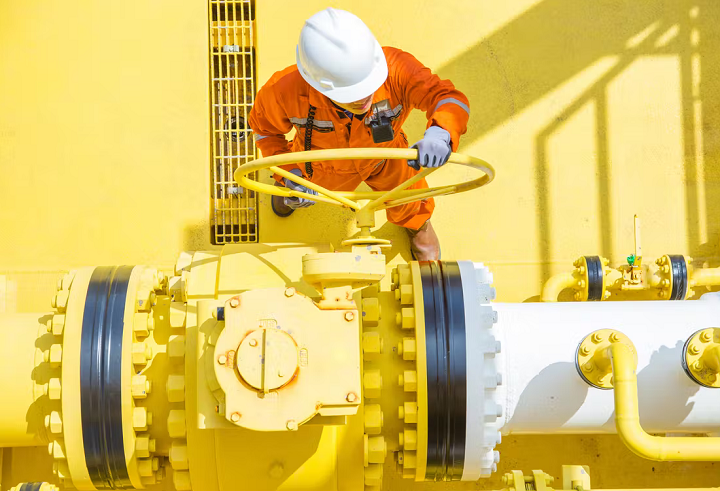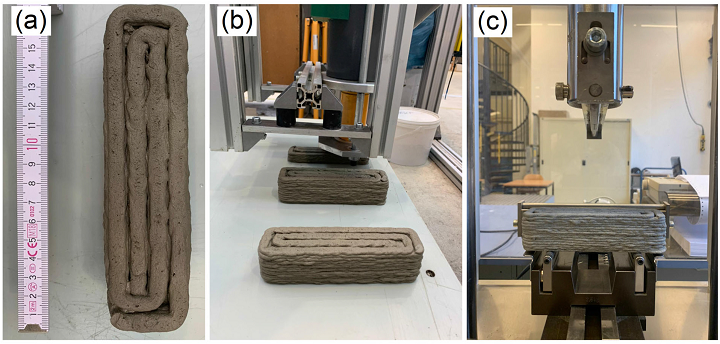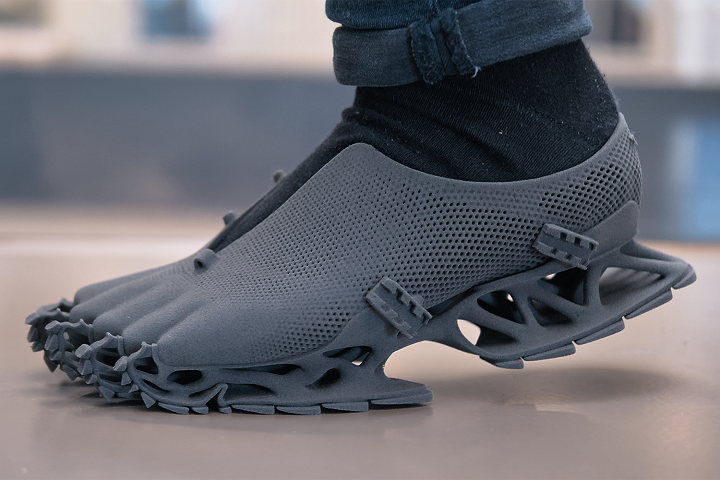In 3D Printing News Briefs, we’re starting with business today, as UpNano announced it is expanding to the US. Then we’ve got news about medical 3D printing, aerospace 3D printing, and offshore 3D printing. A team of researchers from Europe experimented with adding recycled glass to cement composites to print buildings. Finally, a German designer and architect designed a strange-looking shoe designed to be 3D printed out of flexible TPE using Sintratec’s laser sintering technology.
UpNano Expanding to the US
First up, TU Wien spinout UpNano GmbH, a leader in two-photon polymerization (2PP), announced that it will be expanding its operations to the United States. The move is due to the Austrian company’s solid financial position and strong interest from the US market, as it’s reporting a year in which sales have tripled. The tech company’s NanoOne series of laser-powered 2PP 3D printers are said to be capable of printing structures at high speed and high resolution across 12 orders of magnitude. As part of the expansion, Erika Bechtold, PhD, currently the Director of Technology Commercialization at Harvard’s Office for Technology Development, supporting the Wyss Institute for Biologically Inspired Engineering, will serve as Vice President of US Operations in Boston, Massachusetts. Dr. Bechtold has over ten years of business development and commercial strategy experience that she brings to the position.
“I am so impressed with the NanoOne systems that the team has built. UpNano is at a pivotal time of growth, and I’m excited to be joining the team to help promote this commercial-stage system in the US. It’s such a great opportunity at a time of noticeable growth in the 2PP 3D-printing markets,” said Dr. Bechtold.
Extol Gets FDA Registration for Contract Manufacturing of 3D Printed Medical Devices

Spentys orthoses manufactured by Extol
Digital manufacturing technology company Extol, Inc. announced that it has received FDA registration for turnkey contract manufacturing of 3D printed medical devices. This newly obtained registration from the FDA will make it possible for Extol to expand its 3D printed offerings for the life sciences industry. The company will likely see an immediate positive impact in its ability to offer complete 3D printed solutions for medical devices in the orthotics and prosthetics (O&P) market. In addition to 3D printing, Extol will also offer post-processing, final assembly, and order fulfillment of finished medical devices.
As Kyle Harvey, Extol’s Business Unit Manager for Additive Manufacturing, explained, “Digital manufacturing with 3D printing is disrupting the way people make products in nearly every industry.
“Digital transformation is well underway in the O&P industry to create better outcomes for patients using the medical devices. We are very excited to support O&P partners and practitioners who are investing in digital workflows.”
Aurora Labs’ Campaign to Demonstrate Metal 3D Printing for Aerospace Standards
Australian industrial technology company Aurora Labs announced a new Print Demonstration Campaign, in which the metal 3D printer it’s developing will operate for 1,000 hours in less than three months. This will demonstrate that the company’s Beta prototype printer, subsystems, and architecture can meet the exacting standards for draft SAE international aerospace printing specifications AMS7039 and AMS7032. The project is endorsed by The Barnes Global Advisors, which has offered analysis and consultation during the commercialization phase. The four-phase project, consisting of 24 builds, will print 316L stainless steel parts, which will then undergo a variety of metallurgical, mechanical, radiographic, and chemical tests. The results of the over 500 test specimens must be consistent and repeatable across all four phases.
“We look forward to completing the demonstration campaign and sharing the results with prospective clients, partners and the wider AM community. A positive result will validate our capability for a wide range of industry applications that Aurora is pursuing, not just limited to aerospace,” said Peter Snowsill, the CEO of Aurora Labs. “Demonstrating A3D’s technology methodically with careful data collection is an important part of our commercialisation strategy, adding to a bank of information that can be shared with prospective partners. The results will also assist in securing contract printing clients as we promote print services to local industry. We are confident of achieving success and look forward to presenting the outcomes.”
Woodside Activates 3D Printed Valve on Offshore Platform
Another Australian company, Woodside Energy, has installed and activated a 3D printed valve on its offshore Goodwyn A platform, which is part of its North West Shelf (NWS) project. The FutureLab at Monash University helped redesign a stainless steel monoflange body for 3D printing, which was approved for pressure-containing critical service use. The part is a double block and bleed valve used to safely isolate instruments during maintenance work, and Woodside said the improved design increased flowthrough by avoiding restricting channel junctions. The company will next focus on a 3D printed steel inducer on the FPSO Okha platform at the NWS complex.
“It can be energy intensive, time consuming and expensive to source replacements for such parts,” said Woodside Energy’s Executive Vice President–Sustainability, Shaun Gregory, about how 3D printing can help solve problems when it comes to replacing parts that OEMs can no longer supply.
Researchers 3D Printing Cementitious Composites with Recycled Glass
A team of researchers from the Technical University of Berlin and Brunel University in London recently published a paper about their work using recycled glass as a component of concrete for 3D printing buildings. Their hope is to lower the significant environmental impact of concrete, as the construction industry creates about 35% of all global landfill waste. Concrete is made of water, cement, and aggregates like sand, so the team replaced up to 100% of the aggregate in their mix with glass, which is easy to recycle and actually produced from sand. They crushed soda-lime glass bottles from a local recycling company, and then washed, dried, milled, and sieved the pieces to make concrete. The team successfully 3D printed wall elements and prefab building blocks out of their cementitious composite material. They also took pains to make their material more sustainable: the type of glass they used has increased thermal conductivity; they replaced some Portland cement with less hazardous limestone powder; and they added lightweight fillers to reduce the concrete’s density.
“The presence of glass does not only solve the problem of waste but also contributes to the development of a concrete with superior properties than that containing natural sand. If used in this way, waste glass can find a new life as part of a construction material,” wrote Seyed Ghaffar Medhi Chougan and Pawel Sikora, two of the co-authors.
“Our research shows that an ultra-lightweight, well insulated 3D building is possible – something that could be a vital step on our mission towards net zero.”
Unique 3D Printed Shoes Make Bigfoot Tracks
Finally, I bet you’ve never seen anything quite like the Cryptide sneaker—fully 3D printed footwear with soles that make tracks like Bigfoot would! German designer and architect Stephan Henrich created the shoe, which is obviously inspired by mythic Cryptid creatures, like the Loch Ness Monster or Bigfoot. Consisting of a sole with an open design, and combined with a thin upper shoe, these were laser sintered on the Sintratec S2 printer out of its flexible, rubber-like TPE elastomer. While it may look odd, the Cryptide shoe is more ergonomic, and also comfortable to wear, as Henrich varied the wall thickness to make some parts soft and flexible and other parts stiff.
Henrich confirmed: “If you wear this shoe, you will leave traces like a cryptid would do.”
Subscribe to Our Email Newsletter
Stay up-to-date on all the latest news from the 3D printing industry and receive information and offers from third party vendors.
You May Also Like
3D Printing Financials: Fathom Struggles in Financial Quicksand During Critical Transition
Facing a year of key transitions and financial pressures, Fathom (Nasdaq: FTHM) has filed its annual report for 2023 with the U.S. Securities and Exchange Commission (SEC). The document outlines...
Latest Earnings Overview for Australian 3D Printing Firms Titomic and AML3D
Australian 3D printing manufacturing firms Titomic (ASX: TTT) and AML3D (ASX: AL3) reported their financial results for the period from July to December 2023, marking the first half of their...
3D Printing Webinar and Event Roundup: April 7, 2024
Webinars and events in the 3D printing industry are picking back up this week! Sea-Air-Space is coming to Maryland, and SAE International is sponsoring a 3D Systems webinar about 3D...
3D Printing Financials: Unpacking Farsoon and BLT’s 2023 Performance
In the Chinese 3D printing industry, two companies, Farsoon (SHA: 688433) and Bright Laser Technologies, or BLT (SHA: 688333), have recently unveiled their full-year earnings for 2023. Farsoon reported increases...


